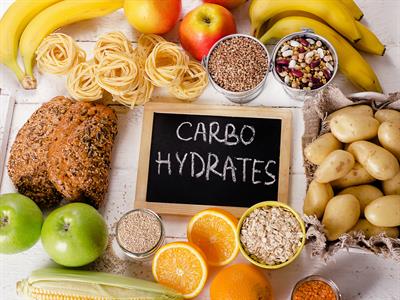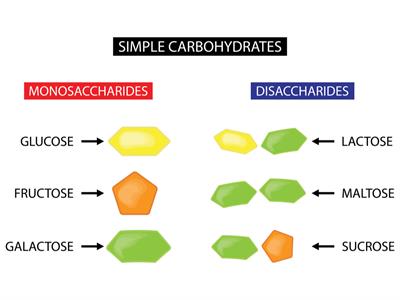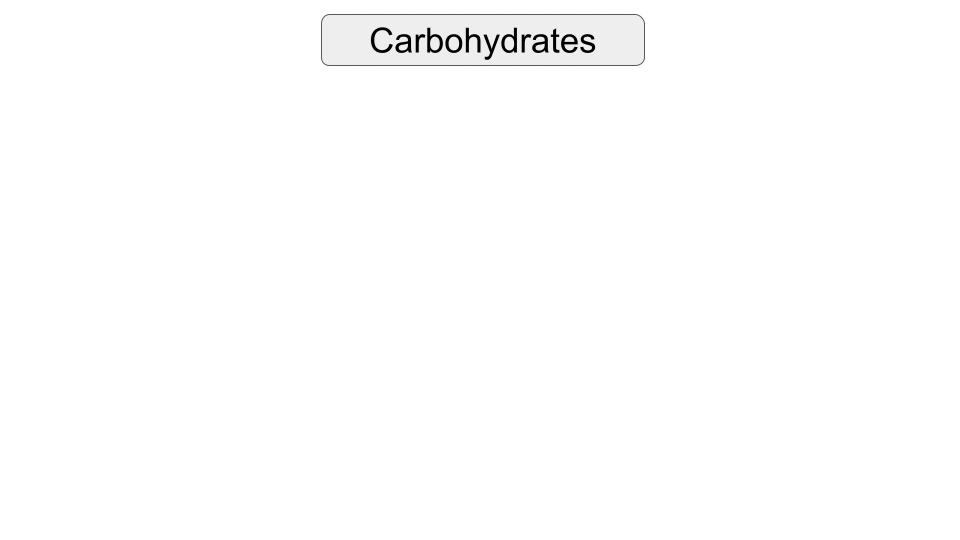PDF chapter test TRY NOW
What do you generally consume in breakfast and lunch? South Indians consume Dosa, Idly, Pongal, Upma or Poori. North Indians consume Chapathi, Poha, or Bread. The lunch mainly consists of Chapathi or Rice.
The breakfast, lunch or dinner is mainly made of rice or wheat. Both of these are rich in carbohydrates. Let us discuss in detail about carbohydrates.
Carbohydrate
Carbohydrates are organic compounds that are composed of carbon, hydrogen and oxygen. They are an essential nutrient that provides the main source of energy to the body. Carbohydrates are primarily present in plant foods but also occur in dairy products like milk.

Carbohydrate sources
Carbohydrates in foods occur in various forms, which include:
1. Sugar - Includes sugars that are present naturally in foods. Sources of sugars in food include fruits, honey, cane sugar, and sugar beet.
2. Starch - Starch comes under the category of complex carbohydrates. They are polymers of glucose. Sources of starch include rice, wheat, maize, potato.
3. Dietary fibre - They are mainly indigestible complex polysaccharides. The sources of dietary fibre include whole grains, nuts and seeds.
Starch and sugars are the most abundant carbohydrates present in our food. Glucose, sucrose, lactose, starch, cellulose, fructose are examples of carbohydrates.
Carbohydrates are classified as :
1. Monosaccharides - simplest carbohydrates as they consist of a single sugar unit.
Example:
Glucose, fructose, galactose.
2. Disaccharides - contains two units of sugars, which can be the same or different.
Example:
Sucrose, lactose, maltose

Monosaccharides and Disaccharides
3. Polysaccharides - "poly" means many. Polysaccharides contain many sugar units linked together to form one molecule. Polysaccharides can be linked together in long straight chains or can be branched.
Example:
Cellulose, starch, and glycogen

Dietary requirements of the macronutrients vary from person to person. But in general, the daily requirements needed in grams is tabulated below:
Macronutrient | Dietary sources | Daily requirement in grams |
| Carbohydrates | Rice, whole grains, starchy vegetables like potato, sugarcane, honey, fruits | \(150 - 200\) |
| Proteins | Pulses, legumes, soya beans, nuts, fish, poultry, green leafy vegetables, egg, milk and dairy products | \(40\) |
| Fat | Meat, vegetable oils, egg yolk, cheese, butter | \(35\) |
